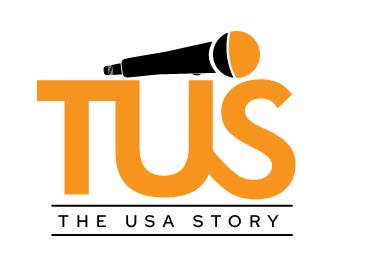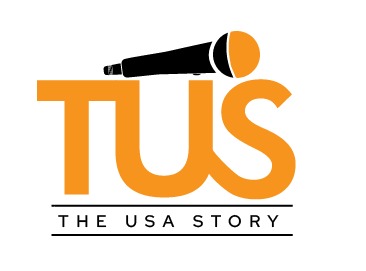And thanks to their lower-revenue status, the Rays would churn players by the dozen from year to year, trading stars as they reached more expensive arbitration years, or even pitching linchpins – Chris Archer, Blake Snell and Wade Davis, to name a few – already signed to team-friendly deals.
But this? This has more the air of permanence.
While the Rays’ payroll is still a very team-friendly $72 million, eight players are signed to multiyear deals, including 22-year-old shortstop Wander Franco, whose $182 million guarantee is stretched through at least 2032. And while Eflin was the big offseason get, it was multiyear contracts signed by Springs (four years, $31 million), reliever Pete Fairbanks (three years, $12 million) and first baseman Yandy Diaz (three years, $24 million) that galvanized the Rays heading to spring training.
“Having that contract security plays a big factor in their confidence, knowing that hey, we’re going to be here a while and this team believes in us,” says McClanahan, the club’s ace who should be arbitration-eligible next year. “It was awesome to see them signing long term because they work hard, they’re great people and they deserve it.”
Or, as Rasmussen put it, “It’s awesome to see good people getting paid.”
The gratitude certainly runs both ways.
‘They believe in us’
When Springs joined the Rays from Boston in a February 2021 below-the-radar trade, he was admittedly a bit of a mess. The pandemic-shortened season caused him to put “way too much pressure on myself” to impress the Red Sox, he says, and he flopped, posting a 7.08 ERA.
Rays pitching coach Kyle Snyder, backed by a Rays analytics department that’s remained best in class even a full decade after the departure of trailblazing GM Andrew Friedman to the Dodgers, long had a reputation for maximizing pitchers’ abilities, be it a veteran like Charlie Morton or a reclamation project.
Springs, 30, was simply a reliever with a career 5.42 ERA with promise but long stretches of inconsistency in three years with Texas and Boston when Snyder, pitching performance analyst Winston Doom and the Rays got their hands on him.
“A lot of it was understanding who I am as a pitcher – where I need to go to get strikes, to get weak contact, swings and misses,” he says. “They dove into that with me and opened my eyes to, this is what you do well. A lot of it is confidence – in the big leagues, when things aren’t going great, at times confidence can sway a little bit with that and you can get caught up in results.
“Getting out of that mentality and looking at it for what it is: Baseball is a really hard game.”
The modern trappings of pitch development – high-speed cameras, granular data for every pitch thrown in a big league game, pitch tunneling – can amount to something of a cheat code. Every franchise has had access to largely the same tools for nearly a decade, with the Statcast era dawning in 2015 and early leaders in the space moving on to higher-level jobs with other organizations, leveling the intellectual playing field.
What separates the Rays and Dodgers in this pack, it seems, is imparting their internal convictions to the players.
“They believe in us,” says Springs. “They have the utmost confidence in whoever takes the ball that night. They believe it. They make you feel that. Eventually, you start to buy in. It might take some guys a little bit longer.
“But you’re hearing the stuff: ‘You’re really really good. Here’s the numbers.’ They trust us. They trust me. You buy in.”
Springs lived it in 2021, when his early-season leverage index resembled a bull market. By the season’s 16th game, manager Kevin Cash called on him to close out a game, and by May 5 he had two saves, four holds and a 1.93 ERA.
A year later, the Rays began stretching him out to start, and by last June 24 had his first six-inning outing. He finished with a 2.46 ERA and started 25 games and took that confidence into his 2023 debut: A six-inning, 12-strikeout, no-hit effort against Detroit.
If McClanahan, a 2018 first-round pick, is the Rays’ anointed one and Eflin the high-priced mercenary, Springs and Rasmussen are the separators, the guys who extend the rotation into a four-headed monster. Both have been nursed along from relief to the rotation and while the club will closely monitor their stamina, will not face any hard innings limits.
“They’re looking out for my long-term career,” says Rasmussen, whose 2.84 ERA came across 146 innings in 2022. “They value me and my career. So they were constantly saying, we’re going to minimize workload in this specific outing and this specific outing, to try and safely build you to an area where you can safely go in years to come.”
While Springs was a reclamation project, Rasmussen was always on the Rays’ radar. They drafted him 31st overall out of Oregon State in 2017, only to see him return to Corvallis, after which Milwaukee drafted him sixth overall a year later. With Franco’s time arriving, the Rays burned a key bit of trade capital – incumbent shortstop Willy Adames – to acquire Rasmussen in 2021.
What did they see? Not a radar gun reading or the break on a particular pitch, but rather the lateral rotation of Rasmussen’s right wrist.
“I supinate really well,” says Rasmussen, “so they said hey, how do we continue to add different breaking balls to the arsenal? We just developed, through supination, how I can continue to develop more breaking balls to be able to keep hitters guessing at different speeds and different movement profiles.”
It didn’t hurt that the Rays’ No. 2 starter last year was two-time Cy Young Award winner Corey Kluber, who has been something of a pied piper for the “sweeper,” his big-breaking offspeed pitch that’s a more extreme version of a “slurve.” Snyder has worked diligently with both Rasmussen and Springs on the pitch, with sublime results.
“It looks like guys can’t see the ball out of his hand,”says Eflin of Springs. “With his changeup and his slider and his sweeper and his heater, he just mixes it up so well. It’s almost like he’s a 10-year vet.”



